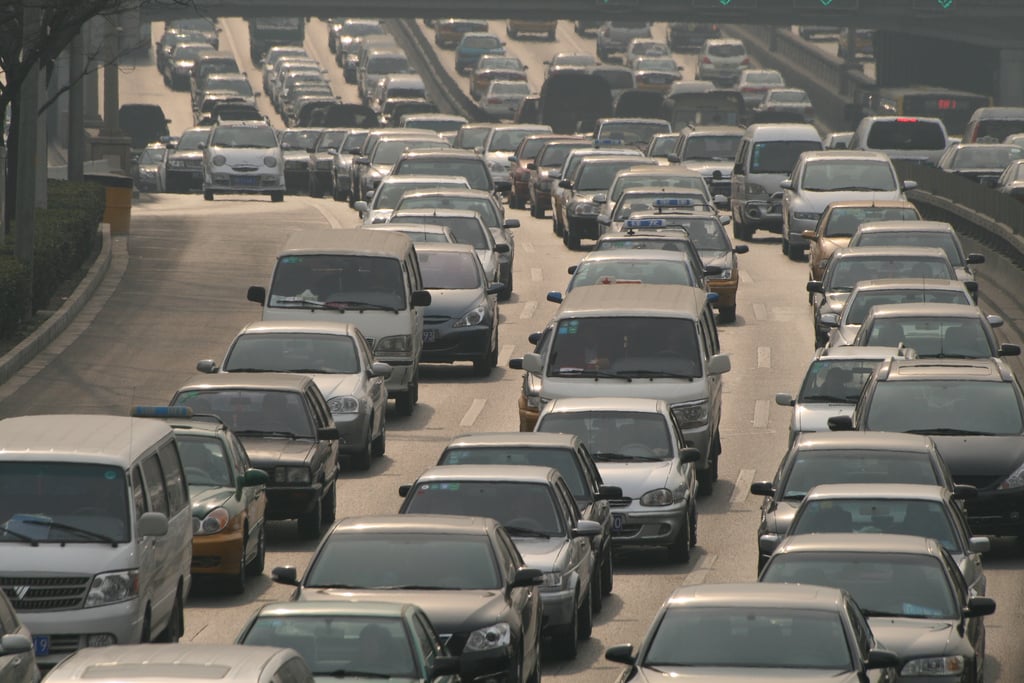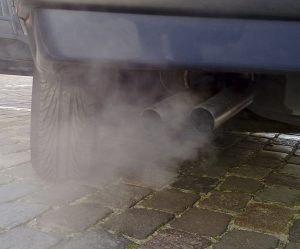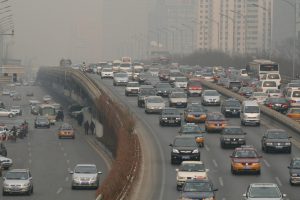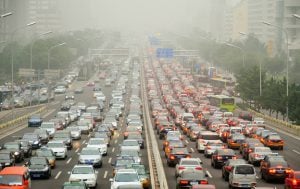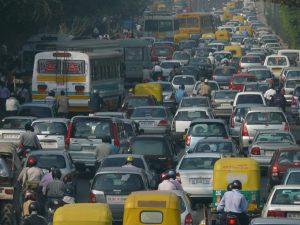In January, China launched its toughest fuel economy improvement plan yet. The
Stage 4 standards for passenger vehicles require fuel consumption per 100 kilometres to fall rapidly from 6.9 litres to 5 litres between 2016 and 2020, an improvement in fuel economy of 6.2% a year over the period.But not everyone is happy. The new standard has sparked debate in the automotive sector and concern among think-tanks that the fuel economy of traditional vehicles could stagnate or worsen, despite the market gradually shifts to electric vehicles.
Fuel economy standards
China started mandating fuel economy improvements in 2005. But progress has been slow. Between 2006 and 2015, average fuel consumption per vehicle per 100 kilometres fell from about 8 litres to 7 litres, an annual decline of less than 2%. The new standard is designed to speed things up with a push for twice the progress in half the time.
Meeting the new standard will be a tough task for many manufacturers though, according to Xia Shengzhi, assistant to the secretary general at the China Association of Automobile Manufactures. He said at a conference in October that “overly strict emissions standards and technical requirements will have a huge impact on Chinese passenger vehicle brands.”
Should this just be taken as defensive posturing or can the Chinese government be confident that manufacturers will hit the new target?
Focus on EVs
In 2013, the government encouraged the manufacture of electric vehicles with the introduction of a new method of calculating fuel economy, the Corporate Average Fuel Consumption (CAFC) system. This strongly favoured electric vehicles because each one manufactured was deemed to have zero emissions and be equivalent to five fuel-burning vehicles.
Although this helped to spur the development of China’s electric vehicle market, it also had an unfortunate side effect on fuel economy. According to a September report published by the Innovation Centre for Energy and Transportation (iCET), a think-tank, if the preferential inclusion of electric vehicles in the CAFC system is ignored, average fuel consumption per 100 kilometres for passenger vehicles nationwide was slightly over 7 litres, meaning it’s still not met the older Stage 3 standard of 6.9 litres per 100 kilometres. When electric vehicles are included in the CAFC calculations, fuel economy appears much better, at 6.6 litres.
Indeed, the inclusion of electric vehicles in broader fuel economy calculations appears, in some cases, to have worsened fuel economy.
The iCET study analysed fuel consumption changes for ten of China’s top electric vehicle manufacturers and found that when production of electric vehicles reached a certain level the firms effectively gave up on improving the fuel efficiency of their vehicles with internal combustion engines. In some cases, fuel consumption levels even increased.
“Car makers can meet national fuel economy standards simply by making more electric vehicles,” explained Kang Liping, low-carbon transportation project officer for iCET. “Some of the firms producing a high percentage of electric vehicles such as BYD and Geely have even met requirements for 2020 already.”
Liu Minhui, head of the electric vehicle department at FAW Group’s R&D centre, told chinadialogue that in order to keep costs under control and meet fuel consumption standards, many firms would try to find a balance. “Produce the right number of electric vehicles and you don’t need to put too much effort into fuel economy for your traditional vehicles, and everything’s rosy,” he said. But Liu stressed that this is a short-sighted approach and will not help companies’ long-term development.
An Feng, executive director of iCET, thinks the preferential treatment given to electric vehicles is a double-edged sword: on the one hand it makes it easier for firms to meet fuel economy standards flexibly; but on the other hand those firms may relax or even abandon efforts to improve the fuel economy of vehicles with internal combustion engines.
Although the future may belong to electric vehicles, in the short- to medium-term, a failure to improve fuel economy standards matters. China has added 19 million vehicles to its roads this year – a 15% increase from the same period a year earlier – and is expected to have over 200 million vehicles on its roads by the end of 2020, up from 154 million in 2014.
Weak enforcement
Industry insiders say that it is not a lack of innovate that is holding back improvements in fuel economy but a failure to incentivise manufacturers. Despite clear national standards being in place, there are no effective incentives for or sanctions on automakers; firms that do not meet the standards are not held accountable, and those that do particularly well go unrewarded.
The Ministry of Industry and Information Technology started publishing annual fuel consumption data for Chinese passenger vehicle manufacturers three years ago. In 2015, 31 automakers failed to meet standards.
Wu Wei, head of the Machinery and Equipment Office at the National Development and Reform Commission’s Department of Industrial Coordination, indicated that passenger vehicle fuel consumption would be closely managed, with firms below the standard liable to severe sanction or closure. But apart from some naming of firms that have failed to meet the standard, no sanctions have been deployed.
Rising transport emissions
The future may be electric, but the reality at present is that 98% of new cars sold in 2015 were powered by internal combustion engines. Industry insiders say there will be no change, in the short-term at least, to the market dominance of such vehicles.
Zhou Zhou, deputy general manager of the China Automotive Engineering Research Institute, admits that the Chinese market remains keen on high large vehicles such as minivans and sports utility vehicles. So far, these types of vehicles have not been a major focus of automakers.
Transportation accounts for about 10% of China’s carbon emissions currently, but with continued economic growth and improvements in living standards, fuel consumption by the transport sector can be expected to increase.
Wang Tao, assistant director of the CBN Research Institute and an expert on climate and energy policy, indicated that with private car ownership growing, emissions in the transportation sector are rising faster than any other sector. So cutting emissions from traditional vehicles – the bulk of the car market – will be key to cutting emissions.
An Feng argues that the use of electric vehicles to “compensate” for the fuel economy shortcomings of traditional vehicles should be gradually phased out. Instead, a method that takes into account actual energy use over the vehicle’s entire life cycle should be put in place. Only this will deliver the long-term improvements in fuel economy that are needed.
